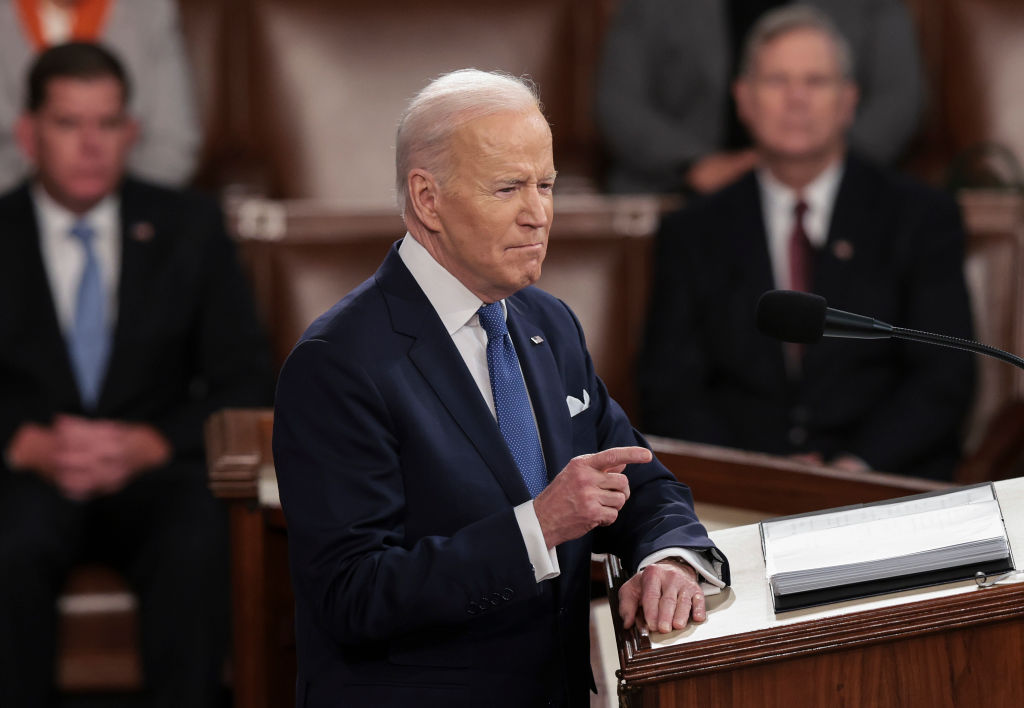“Exploring the Origins of the Designated Survivor for the State of the Union Address”
President Biden delivers his first State of the Union address before the joint session of Congress
US President Joe Biden delivers the State of the Union address during a joint session of Congress in the chamber of the US Capitol March 1, 2022 in Washington, DC Credit – Win McNamee—Getty Images
Around 9 p.m. Tuesday, President Joe Biden, Vice President Kamala Harris and the Cabinet will enter the Capitol for the State of the Union address — all but one Cabinet member. This cabinet member is known as the “designated survivor.”
The designated survivor for 2023 is Secretary of Labor Marty Walsh. This person is chosen to continue leading the government in the event of a catastrophic event in the Capitol. (Some members of Congress are also holding back to keep the legislature running in the event of an attack.)
“The designated survivor was most commonly a secretary of the Interior Department, Department of Agriculture, and Department of Commerce (although other executive branch department heads were also appointed),” according to the Congressional Research Service. In the current President’s Cabinet, Secretary of Agriculture Tom Vilsack was previously a designated survivor of President Obama’s 2012 State of the Union Address. In 2022, it was Secretary of Commerce Gina Raimondo.
Continue reading: Few State of the Union speeches have had less impact than this one
While the nation’s first president, George Washington, proclaimed the first state of the Union in 1790, the story of the designated survivors is much more recent. The practice is believed to date back to the Cold War and fears of a Soviet Union nuclear strike. The American Presidency Project at the University of California-Santa Barbara maintains a list of “designated survivors” from 1984 to 2022. Especially in 2021, when many people were working from home during the COVID-19 pandemic, there was no need for a ” designated survivor” because cabinet members watched the speech from their homes or offices.
The “designated survivor” premise has become the stuff of TV drama, with an ABC and Netflix show of the same name positing the HUD secretary, played by Kiefer Sutherland, becoming president after an explosion in the Capitol. But the reality, say former designated survivors, is a bit more mundane.
Continue reading: Recap: Designated Survivor is a new look for Kiefer Sutherland
For the people who have served in this role, State of the Union is sometimes a relaxing evening. Jim Nicholson, former Secretary of Veterans Affairs, told NBC News that during the 2006 State of the Union address, President George W. Bush was taken by helicopter to a “command center-like room” where he was having a “delicious” steak dinner enjoyed. Commerce Secretary Bill Daley described having dinner with his brother and some friends during State of the Union 1998 — when the accompanying Secret Service agents learned the President was back at the White House, he was left to his own devices. “The cars are leaving and I have to get a cab and go home!” Daley told ABC 7 Eyewitness News. When asked how he was doing not being president that night, he replied: “Thank God! Probably for the country. Thank God for the country in many ways!”
Other “designated survivors” agree that the responsibility weighed heavily on them. In a 2017 essay for Politico, Former Agriculture Secretary Dan Glickman recalled the terrifying experience of living as a “designated survivor” during President Bill Clinton’s 1997 State of the Union address. When he was taken to his daughter’s New York home, he was joined by senior military and intelligence officials, including a military officer carrying the 45-pound “nuclear football” — a black, leather-wrapped aluminum briefcase meant to be used to authenticate the person who orders a nuclear strike. Officially known as the ‘President’s Emergency Bag’, the football also includes options for different attack packages – to hit Moscow, Pyongyang, for example, or a much larger number of targets.”
After entering an authorization code, a command would be sent to the Pentagon in nanoseconds, and missiles would launch within minutes. Glickman admitted, “I sometimes wonder if I would have had the courage to give the order.”
Don’t miss interesting posts on Famousbio










